2023 California DMV Permit Test
1/181
Earn XP
Description and Tags
Name | Mastery | Learn | Test | Matching | Spaced |
|---|
No study sessions yet.
182 Terms
When driving in fog, it is best to drive with
Low beam headlights
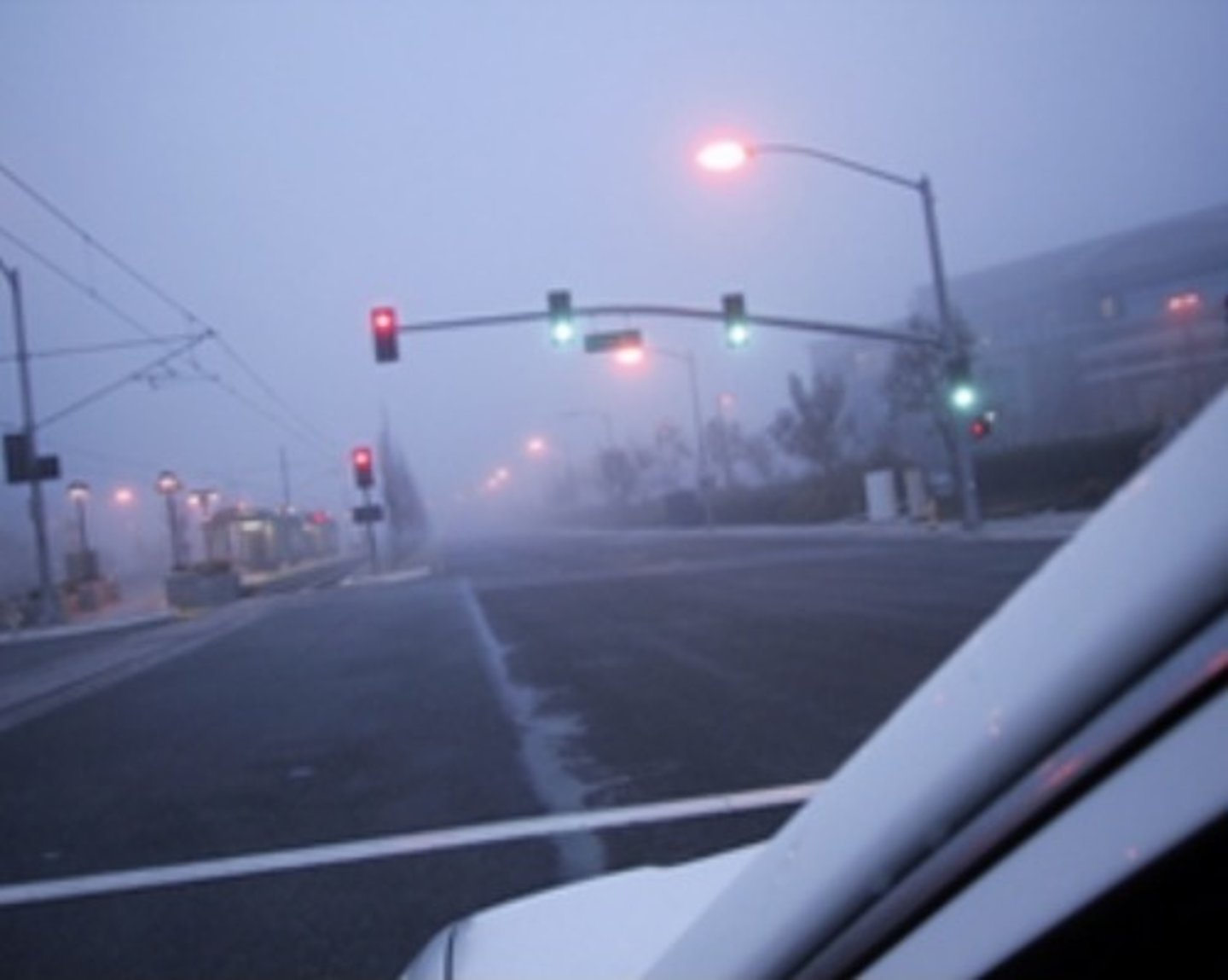
You may drive off of the paved roadway to pass another vehicle:
Under no circumstances.
When you are merging onto the freeway, you should be driving:
At or near the same speed as the traffic on the freeway.
When driving in fog, you should use your:
Low beams
A school bus ahead of you in your lane is stopped with red lights flashing. You should:
Stop as long as the red lights are flashing

You just sold your vehicle. You must notify the DMV within ___ days.
5
To avoid last minute moves, you should be looking down the road to where your vehicle will be in about ______________.
10 to 15 seconds
You are about to make a left turn. You must signal continuously during the last ____ feet before the turn.
100

Unless otherwise posted the speed limit in a residential area is ____.
25 mph

You may legally block an intersection:
Under no circumstances

Which of the following statements about blind spots is true?
Large trucks have bigger blind spots than most passenger vehicles.

With a Class C drivers license a person may drive
A 3-axle vehicle if the Gross Vehicle Weight is less than 6,000 pounds
If you are involved in a traffic collision, you are required to complete and submit a written report (SR1) to the DMV:
If there is property damage in excess of $1,000 or if there are any injuries.
You may not park your vehicle:
Next to a red painted curb

You must notify the DMV within 5 days if you:
Sell or transfer your vehicle

Two sets of solid, double, yellow lines that are two or more feet apart:
May not be crossed for any reason.

You want to make a right turn at an upcoming intersection. You should slow down and:
Signal for 100 feet before turning.

You are driving on a freeway posted for 65 MPH. The traffic is traveling at 70 MPH. You may legally drive:
No faster than 65 mph.

It is illegal to park your vehicle:
In an unmarked crosswalk

The safest precaution that you can take regarding the use of cellular phones and driving is:
Use hands-free devices so you can keep both hands on the steering wheel.

If you have a green light, but traffic is blocking the intersection, you should:
Stay out of the intersection until traffic clears.

You are getting ready to make a right turn. You should:
Slow down or stop, if necessary, and then make the turn.
You must obey instructions from school crossing guards:
At all times.
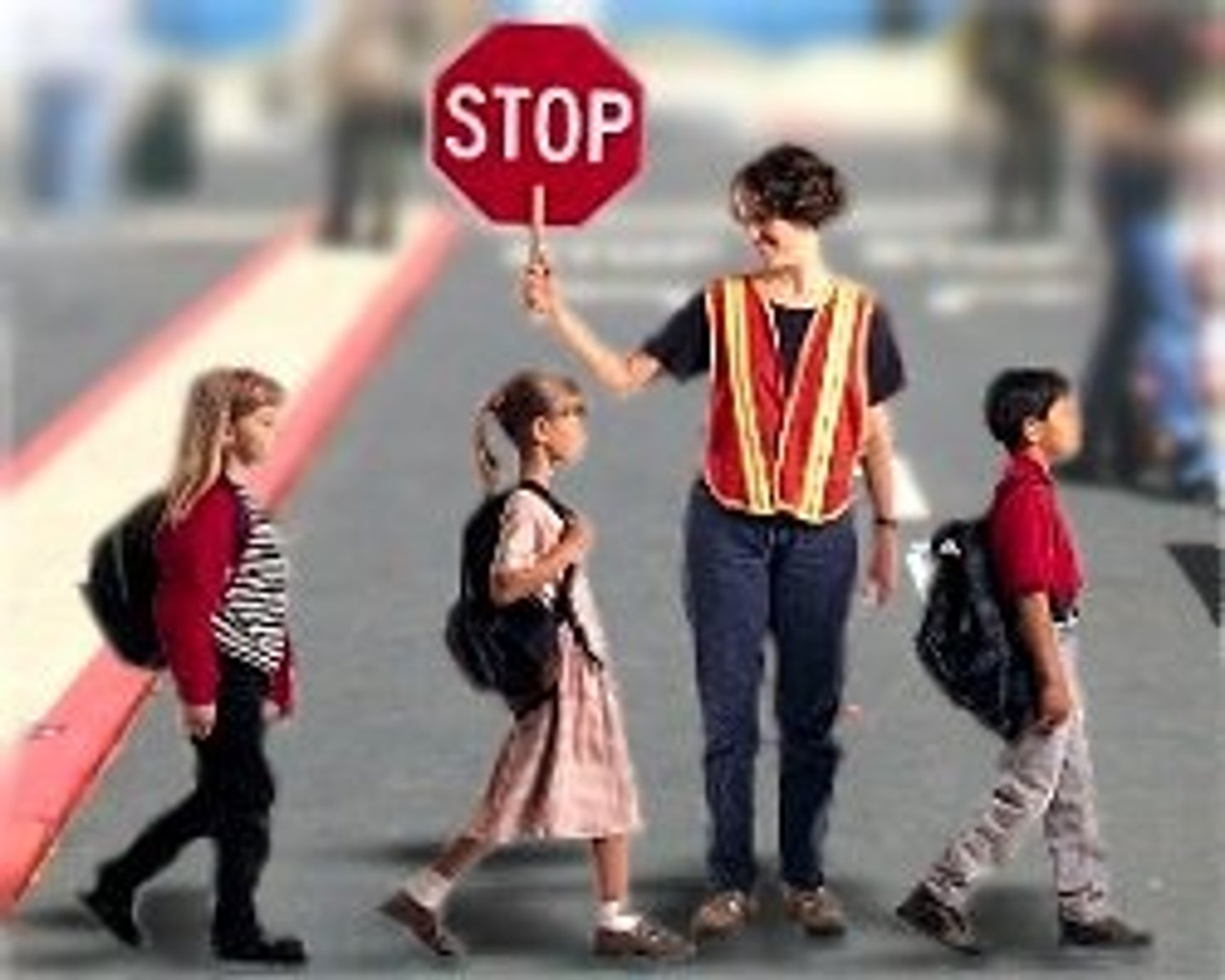
It is a very windy day. You are driving and a dust storm blows across the freeway reducing your visibility. You should drive slower and turn on your:
Headlights.
If you plan to pass another vehicle, you should:
Not assume the other driver will make space for you to return to your lane
You are driving on a freeway posted for 65 mph. Most of the other vehicles are driving 70 mph or faster. You may legally drive:
No faster than 65 mph.
If you drive faster than other vehicles on a road with one lane in each direction and continually pass the other cars, you will:
Increase your chances of an accident.
You are driving on a one-way street. You may turn left onto another one-way street only if:
Traffic on the street moves to the left.
You drive defensively when you:
Keep your eyes moving to look for possible hazards
A large truck is ahead of you and is turning right onto a street with two lanes in each direction. The truck:
May have to swing wide to complete the right turn.
You may cross a double yellow line to pass another vehicle, if the yellow line next to:
Your side of the road is a broken line.
At intersections, crosswalks, and railroad crossings, you should always:
Look to the sides of your vehicle to see what is coming.
When parking your vehicle parallel to the curb on a level street:
Your wheels must be within 18 inches of the curb.
You are preparing to exit the interstate. When should you start reducing your speed?
Immediately upon entering the deceleration lane

Blue traffic signs offer information on:
Motorist services

It is illegal for a person 21 years of age or older to drive with a blood alcohol concentration (BAC) that is __ or higher
0.08%-- Eight-hundredths of one percent

Having a driver license is a :
Privilege, not a right

When changing lanes, you can check your blind spots by:
Using the inside rearview mirror. Turning your head and looking over your shoulder.

You must yield the right-of-way to an emergency vehicle that is using its siren and flashing lights by:
Driving as closely to the right edge of the road as possible and stopping.

You have been involved in a minor traffic collision with a parked vehicle and you can't find the owner. You must:
Leave a note on the vehicle
or
Report the collision without delay to the city police or, in unincorporated areas, to the California highway patrol.
If weather or light conditions require you to have your lights on while driving:
Use your low beams
If it starts to rain on a hot day, the road is slippery:
For the first few minutes
You are entering a roundabout with multiple lanes, and you need to turn left at the intersection. You must:
Choose the left-land lane and exit
To avoid tailgating, drivers should:
Use the "three-second rule"
Three second rule
is a way to measure the distance that you should use as a cushion when following another vehicle. It requires leaving three seconds of space between your vehicle and the vehicle driving in front of you.

When you prepare to make a left turn from a one-way road into a one-way road, you must:
Approach the turn in the left lane of from the left side of a single lane
Two vehicles approach an uncontrolled "T" intersection. One vehicle is on the through road and and the other is on the road that ends. Who has the right-of-way at the intersection?
The vehicle on the through road

STOP SIGN
A red-and-white regulatory traffic sign. This is the only octagonal (8-sided) traffic sign, you can easily recognize it by both shape and color.

At an intersection controlled by a "STOP" sign
you must come to a complete stop and check for pedestrians and cross traffic. Yield to other traffic going through the intersection and any pedestrians crossing the street.
Four Way Stop
This road sign is placed at four-way stop intersections and informs drivers that all entrances to this intersection are controlled by stop signs.

At a four way stop, the first vehicle to arrive at the intersection?
should be the first to leave
At a four way stop, when two vehicles reach the intersection at the same time?
the driver of the vehicle on left must yield to the driver of the vehicle on the right
At a four way stop, if two vehicles are facing each other and are traveling straight through the intersection?
both vehicles can go at the same time.
Unless otherwise posted the speed limit in a residential area is :
25 MPH

Cross Road
One of the intersection traffic signs. Another road crosses the highway ahead. Look left and right for other traffic. Be alert for cross-traffic and regulatory signals.

Traffic Signal Ahead
This sign warns of traffic signals at the intersection ahead. Slow down; poor visibility is likely and be prepared to come to a complete stop on a red signal.

Divided Highway Begins
The highway ahead is split into two separate roadways by a median or divider and each roadway is one-way. Keep to the right.

Divided Highway Ends
The divided highway on which you are traveling ends 350 to 500 feet ahead. You will then be on a roadway with two-way traffic. Keep to the right of approaching traffic.

what type of pavement marking is used to show you which lane you must use for a turn?
Arrows

Based on the DMV handbook, you should never park your vehicle within __ feet of a fire hydrant.
15 feet

DO NOT ENTER sign
is usually installed at the beginning of one-way streets and ramps and it prohibits drivers from entering a one-way roadway where traffic is moving in the opposite direction. A DO NOT ENTER traffic sign is usually installed together with the "WRONG WAY" sign.
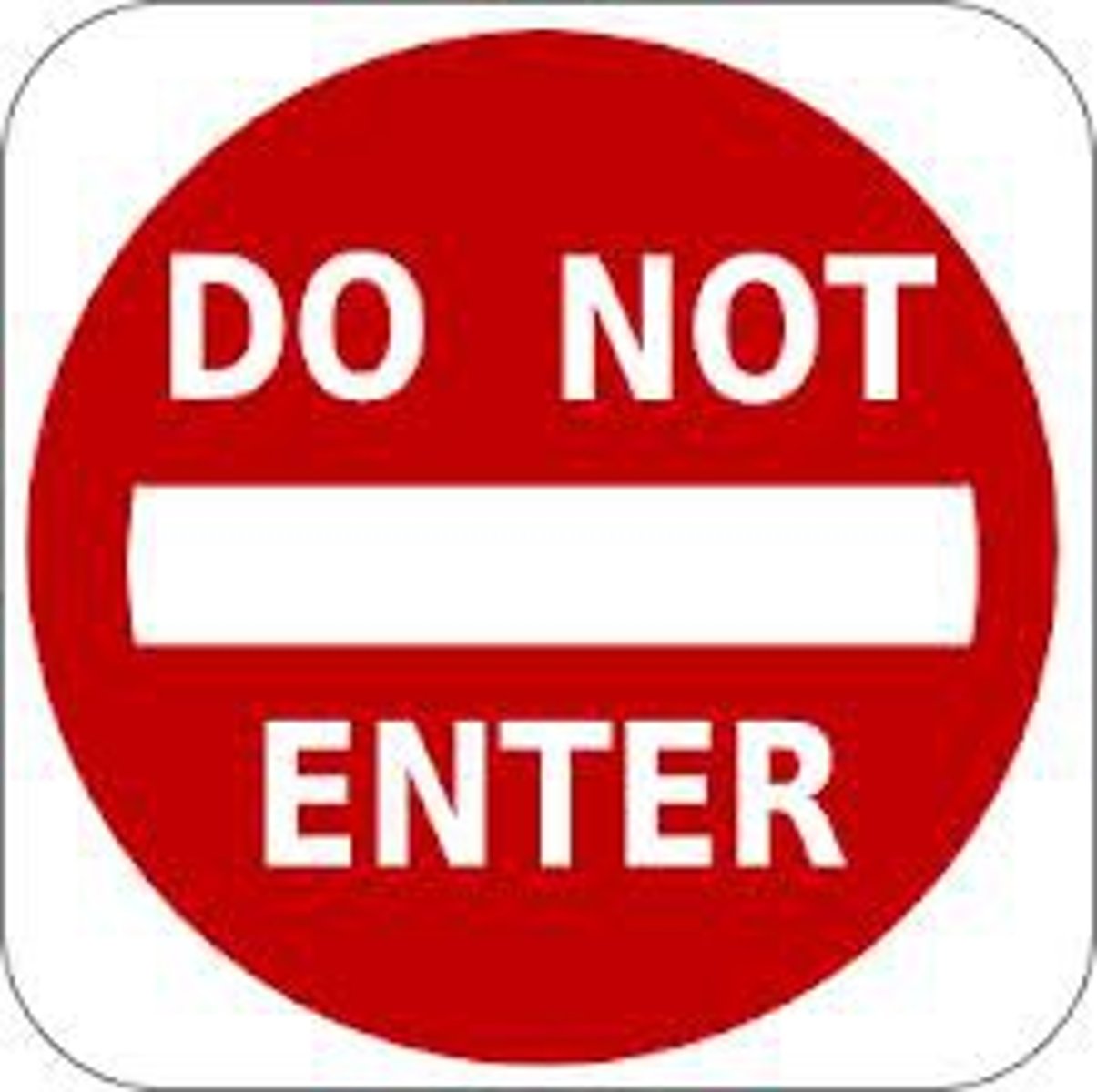
When parking uphill on a two-way street with no curb, your front wheels should be turned to the
Turned to the right (away from the street)

On rainy, snowy, or foggy days, you should turn on your windshield wipers and
Use your headlights so other drivers can see you
Pedestrian Crossing
Watch for people crossing the street. Slow down or stop if necessary. Remember that people crossing the street on the pedestrian crossing have the right of way. Slowing down is important since pedestrians may be obscured by parked vehicles and you may not see them the moment they enter the roadway.

When a school bus flashes yellow lights:
The bus is preparing to stop to let the children off the bust
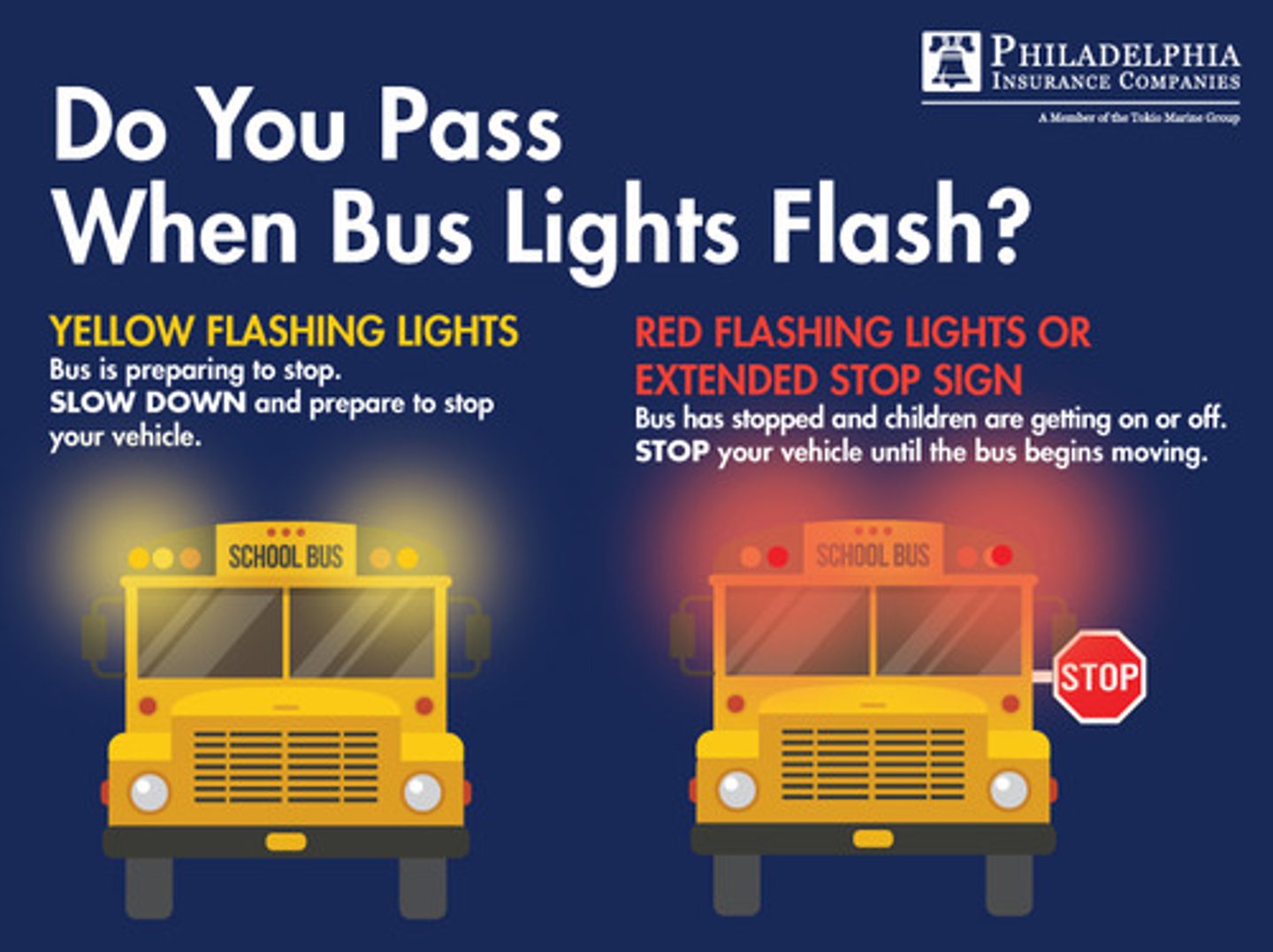
At intersections where two or more drivers stop at STOP signs at the same time and they are at right angles
the driver on the left must yield the right-of-way to the driver on the right.

Generally speaking, you are in a large truck's blind spot if you:
Cannot see the truck driver in the truck's side mirrors

Two sets of solid double yellow lines spaced 2 feet or more apart:
May not be crossed for any reason, they are considered a barrier. Do not drive on or over this barrier, make a left turn, or make a U-turn across it, except at designated openings.
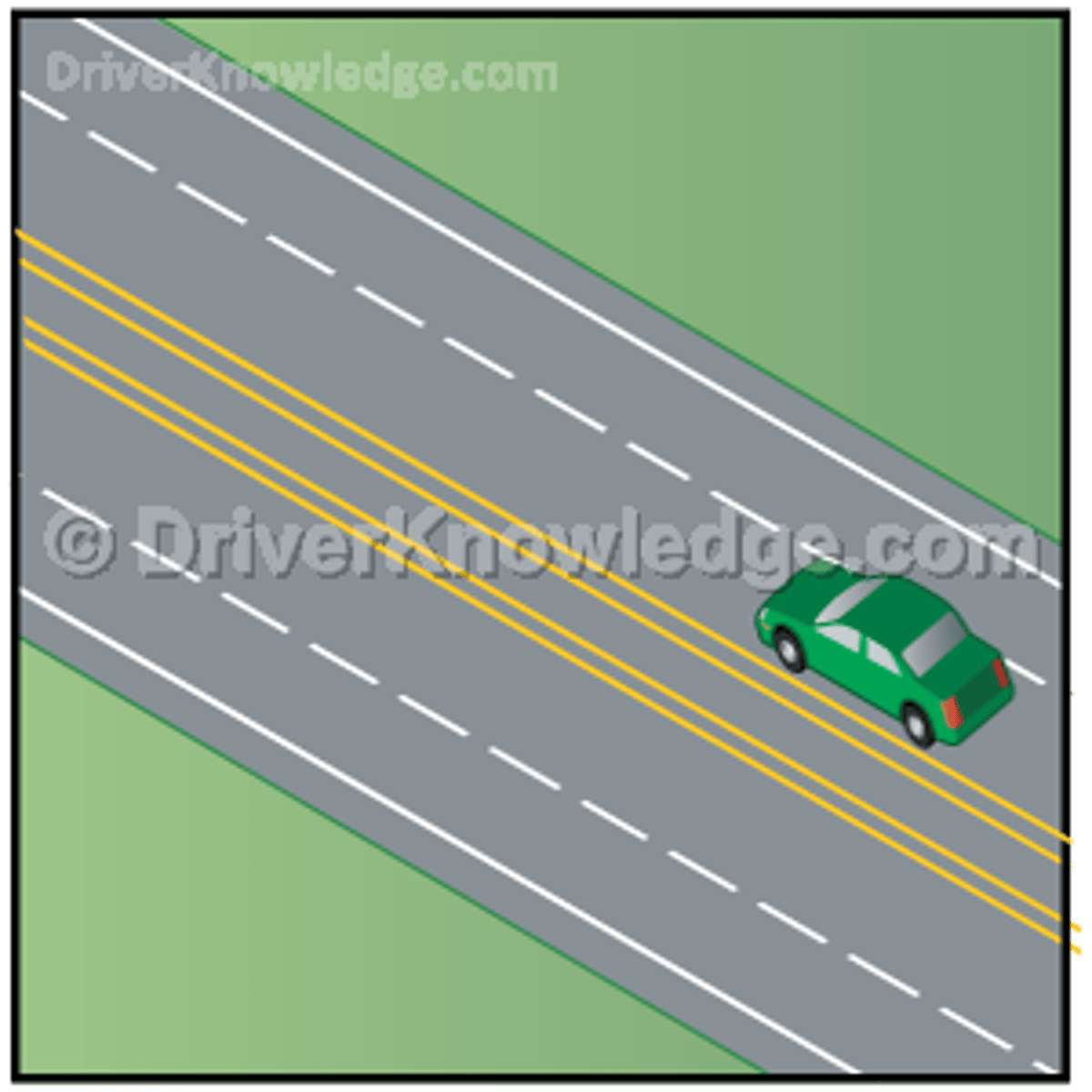
Your blood alcohol content (BAC) depends on what:
how much alcohol you drink, how much time passes between drinks, and your weight.
YIELD right of way sign
Triangle signs mean yield. You must slow down to a speed that is reasonable for existing conditions and stop if necessary.

Parking is never permitted:
In a crosshatched (diagonal) pattern space

You are reaching an intersection, and trees block your view to the side for the last 100 feet before crossing. The intersection is considered:
A "blind intersection"

blind intersection
an intersection in which your view of traffic on an intersecting road is impeded

Roads are the most slippery:
during the first rain after a dry spell because oil and dust on the road have not previously been washed away.

WRONG WAY sign
You are going the wrong way on an expressway exit ramp or highway. Do not drive past this sign. Turn around immediately.

You may turn left onto a one-way street that moves to the left if
there is no sign prohibiting the turn.
You may not turn left onto a one-way street where traffic
moves to the right.
When driving at night on a dimly lit street, you should:
Drive slowly enough so you can stop within the area lighted by your headlights
To make a right turn onto a two-way street from a two-way street, start in the right-hand lane and end in:
The lane closest to the curb
What is the first thing to do when you make a three-point turn?
Signal with your right turn signal, then pull over to the right and stop.
you should first signal and pull over to the right side of the road. Stay on the side of the road until traffic is clear and you have plenty of room in both directions to perform the 3-point turn.
But just as importantly, you start from the far right side of the road to get as much use of the road as possible as you maneuver your vehicle.
what is a three-point turn ?
The three-point turn is a way of turning a vehicle around in a small space by going forward, turning to one side, then backing up, turning in order to face the other direction, then going forward again. This type of turn is usually done when the road is too narrow for a U-turn.

When parking on a public road, drivers should:
Move as far away from traffic as possible and always park on the left side of the roadway.
Merging Traffic
Merging traffic. Traffic may be merging into your lane from another roadway. Be ready to either changes lanes or allow other traffic to merge into your lane.

Lane ends, merge left sign
two lanes of cars will soon become one lane of cars. The right lane must merge to the left yielding to traffic driving in the left lane.

What is the first thing you should do if your wheels move off the pavement?
Ease your foot off the gas pedal and brake gently
When can you drive using only your parking lights?
Under no circumstances
When should you turn on your headlights?
1/2 hour and 30 mins. after sunset, 1/2 hour and 30 mins. before sunrise.
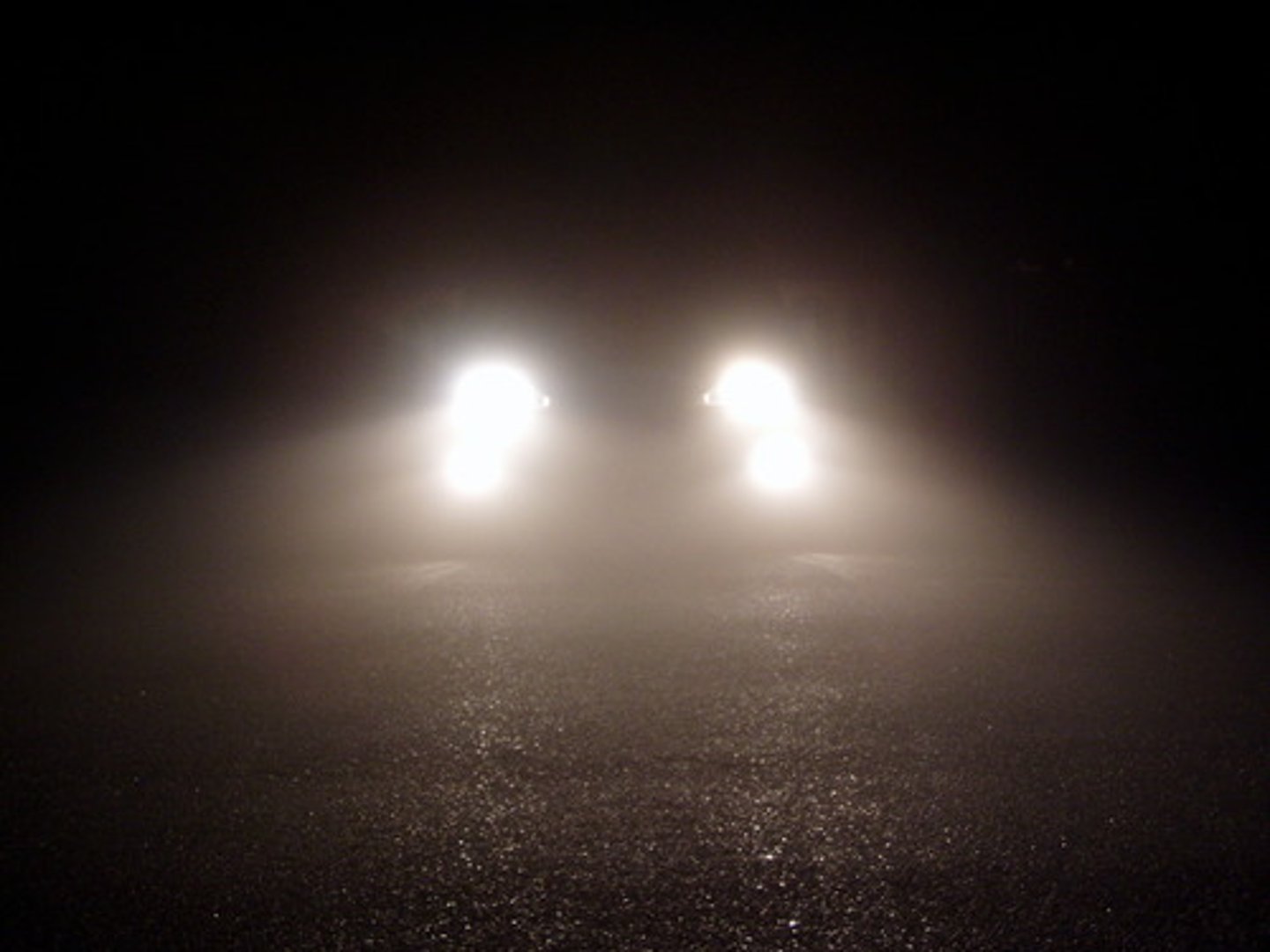
It is illegal to leave a child __ years or younger unattended in a motor vehicle.
Six
Kaitlyn's Law, California Vehicle Code section 15620(a)
prohibits anyone from leaving a child six years of age or younger unattended in a motor vehicle without the supervision of someone at least 12 years of age or older.
Which of the following is true about the Anti-Lock Brake System?
It allows drivers to steer during an emergency braking situation
And It prevents skidding
Left Curve sign
The roadway ahead curves to the left. Slow your speed and keep well to the right.

Right Curve sign
The roadway ahead curves to the right. Slow your speed and keep well to the left.

Sharp Left Turn
The road will make a sharp turn to the left. Slow your speed, keep to the left and do not pass other vehicles.

Sharp Right Turn
The road will make a sharp turn to the right. Slow your speed, keep to the right, and do not pass other vehicles.
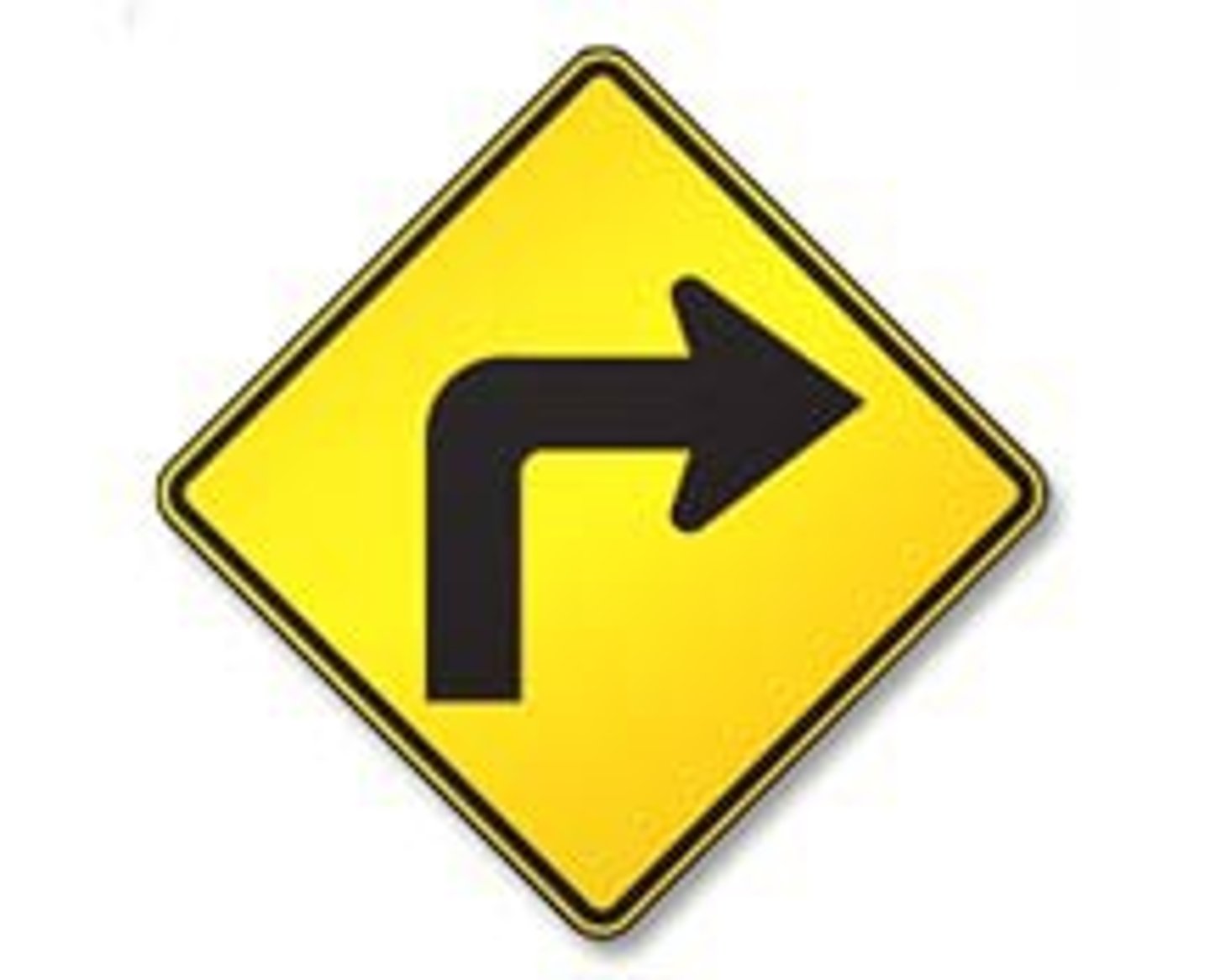
Which of these vehicles must always stop before crossing railroad tracks?
Tanks trucks marked with hazardous materials placards

after passing a car, it is safe to return to your driving lane when:
You can see both headlights of the car you just passed in your rearview mirror

You must come to a full stop at a yield sign
If traffic conditions require it.
If you are convicted of driving under the influence, you may be sentenced to:
Serve up to six months in jail
If the roadway is wet and your vehicles starts to skid, you should:
Slowly ease your foot off the gas pedal
A peace officer is signaling you to drive to the edge of the roadway. You decide to ignore the officer's warning and flee the scene. You are guilty of a misdemeanor and can be punished by being:
Jailed in the country jail for not more than one year